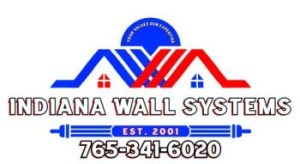
A stucco inspection involves a detailed assessment of the exterior surfaces to ensure structural integrity and aesthetic quality. It’s a crucial process for identifying potential issues that can lead to costly repairs if left unchecked. The inspection covers various aspects, from visual checks to specific tests, ensuring that the stucco is in optimal condition. Homeowners and property managers benefit from regular stucco inspections to maintain the durability and appearance of their buildings.
Visual Examination of Stucco Surface
The first stage in a stucco inspection involves a comprehensive visual assessment of the exterior. Inspectors meticulously search for any visible cracks, as these can be indicators of deeper structural concerns or damage caused by environmental factors. Even the smallest hairline cracks should not be disregarded, as they can allow moisture to infiltrate, potentially leading to severe issues. Early detection and repair of these cracks are crucial to prevent further deterioration and to maintain both the aesthetic and functional integrity of the stucco.
Checking for Signs of Moisture Damage
Moisture damage is a common and serious issue in stucco, often resulting from improper installation or insufficient maintenance. Inspectors look for signs such as discoloration, bubbling, or soft spots, which can indicate water penetration. Moisture can weaken the stucco, foster mold growth, and cause structural damage. Identifying and addressing moisture issues promptly is essential to avoid extensive repairs and to ensure the longevity of the building.
Assessing Stucco Thickness and Application Uniformity
Durability in stucco relies heavily on its proper application, particularly in terms of thickness and uniformity. Inspectors measure the thickness and examine the surface for consistency. Variations in application can create weak points that are prone to cracking and moisture intrusion. Properly applied stucco not only provides better insulation but also enhances the building’s overall appearance and quality.
Inspecting Stucco Around Windows and Doors
Areas around windows and doors are particularly susceptible to gaps and leaks in stucco. Inspectors focus on these critical points, looking for any signs of separation or gaps that could allow water ingress. Ensuring proper sealing and maintenance around these openings is vital to prevent moisture damage and to maintain the effectiveness of the stucco. Addressing any gaps promptly can help protect the building from potential water damage.
Evaluating the Condition of Stucco Joints and Seals
The joints and seals in stucco are essential for maintaining its overall integrity. Inspectors assess these areas for any signs of wear, cracking, or failure. Well-maintained joints and seals prevent water from infiltrating and help keep the stucco system intact. Regular inspections allow for early detection of issues, enabling timely repairs that preserve the stucco’s durability and appearance.
Identifying Areas with Potential Stucco Delamination
Stucco delamination occurs when the layers of stucco separate from the substrate, leading to bulging or detachment. Inspectors identify potential delamination by tapping on the surface and listening for hollow sounds. Causes can include moisture infiltration, improper installation, or structural movement. Early detection is crucial to prevent further damage and to ensure the long-term performance of the stucco.
Testing Stucco Hardness and Durability on Exterior Walls
The protective qualities of stucco depend on its hardness and durability. Inspectors use specialized tools to test these aspects, ensuring that the stucco meets the necessary standards. These tests help determine whether the stucco can withstand environmental stresses and provide adequate protection for the building. Ensuring the stucco’s durability is key to maintaining its structural integrity and visual appeal.
Examining Stucco for Signs of Mold or Mildew
The presence of mold and mildew on stucco can indicate underlying moisture problems and pose health risks. Inspectors carefully examine the stucco surface for any signs of mold or mildew, typically seen as dark spots or patches. Prompt removal and treatment of mold and mildew are essential to prevent further growth and potential damage to the stucco. Regular inspections help maintain a healthy and visually pleasing exterior.
Reviewing Stucco Installation Method and Compliance Standards
A thorough inspection includes reviewing the stucco installation method to ensure it complies with industry standards. Inspectors verify that the stucco has been applied correctly and meets all regulatory requirements. Proper installation is critical to the stucco’s performance and longevity.
Documenting Findings and Recommendations
After completing the inspection, it is important to document all findings and recommendations. Inspectors provide a detailed report outlining any identified issues and suggested corrective actions. This documentation helps property owners understand the condition of their stucco and plan for necessary maintenance or repairs. Proper documentation ensures transparency and facilitates effective communication between inspectors and property owners.
Trust Indiana Wall Systems For Quality Stucco Inspection Services
At Indiana Wall Systems, we provide comprehensive stucco inspection services to ensure the longevity and aesthetic appeal of your property. Our team specializes in exterior painting, delivering top-quality finishes that protect and enhance the beauty of your building.
We also excel in Exterior insulation and finish systems (EIFS), offering solutions that improve energy efficiency and durability. Our certified professionals use premium materials and adhere to the highest standards, ensuring your property remains in excellent condition. Trust Indiana Wall Systems to keep your exteriors looking their best.

